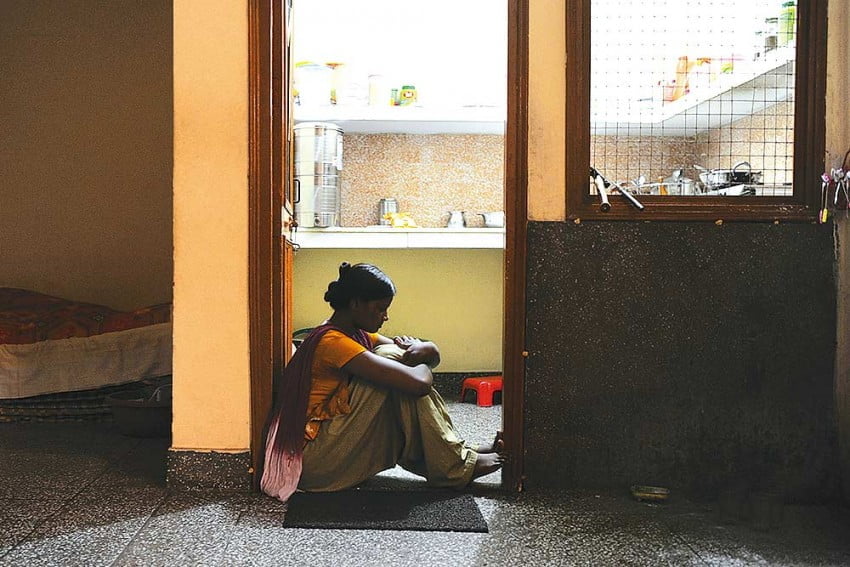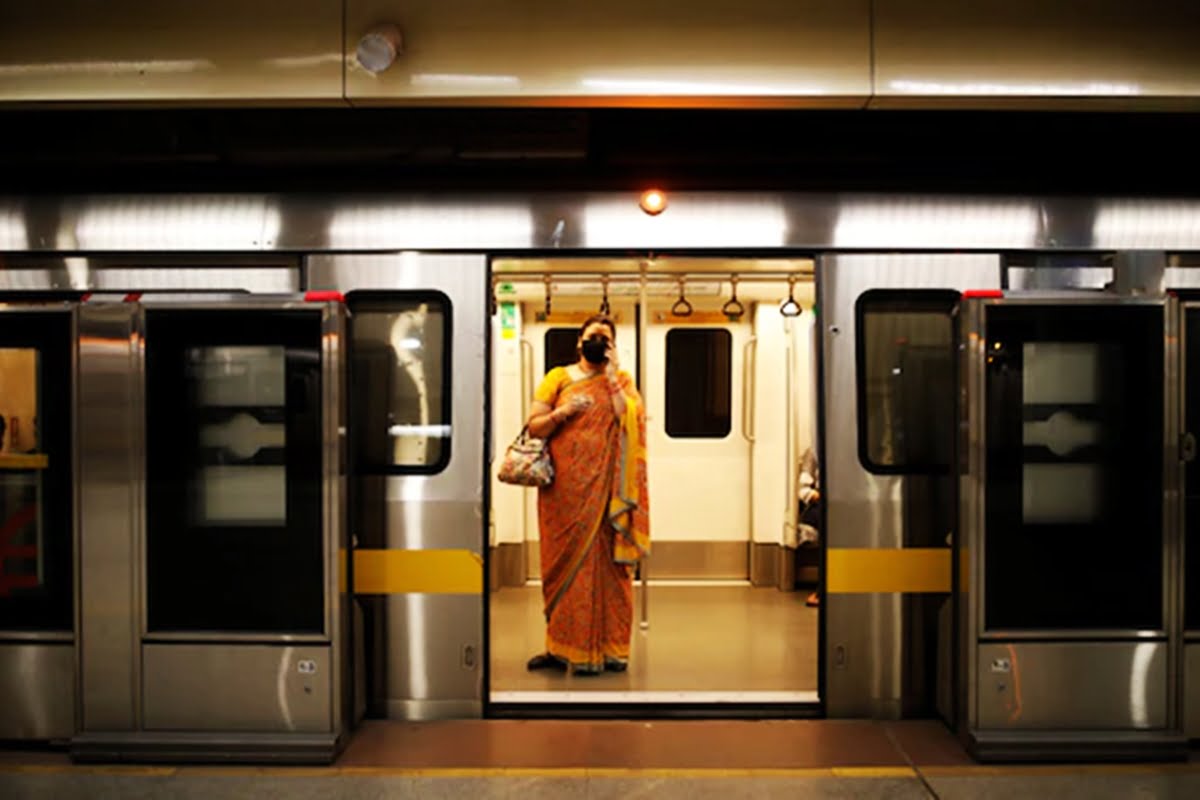A survey published by on sexism and patriarchy, society, women empowerment in 2019 highlighted that only 25% of women are employed in India. When we see the survey of the World Bank in the 2017 development report, it is mentioned that India ranked 120 among 131 countries on female participation in organisations. Now, the question that arises is why are women not participating in the workforce? What are the challenges faced by working women in the job environment? What are the forces that restrict them from participating in the workforce? It is seen that the perception regarding women has rarely changed.
A formative study that Breakthrough undertook in Faridabad gives insights on how women perceive workplace discrimination and household violence spills outside and hinders participation in paid work.
Women’s safety at home, while traveling and at the workplace is quite dismal. Stereotypes towards working women, division of labour and gender roles are present, clear as day. As a result, women and even young girls, burdened by household work and limited autonomy and mobility, are unable to negotiate these power dynamics.
Also read: Pink Booths: Is The Delhi Police’s Initiative A Step Forward In Ensuring Women’s Safety
Women’s safety at home, while traveling and at the workplace is quite dismal. Stereotypes towards working women, division of labour and gender roles are present, clear as day. As a result, women and even young girls, burdened by household work and limited autonomy and mobility, are unable to negotiate these power dynamics.

The study confirms that working women face mental harassment, violence, discrimination at workplace, no safety while travelling, and to top it all off, lack of family support for the given and beyond.
The pandemic couldn’t have come at a worse time, seeing as the adverse effects on job security and workplace adjustments have been beyond severe.
From the In-Depth Interviews (IDIs) and Focus Group Discussion (FGDs) it emerged that participants often cite safety in public spaces as a factor negatively impacting the attitude and readiness to work outside home. Where most male and female participants across age groups favoured working from home as a better option, there were some boys and men who completely negated the idea of financially independent women. A nuanced but important aspect of this concern for women’s safety is that it is often partly real and partly the expression of a patriarchal norm. That is, women do face personal risk of sexual harassment and abuse.
At the same time, sometimes “ensuring safety” includes restricting interactions with men and sometimes a patriarchal norm to restrict women’s freedom is disguised as concern about their safety, when men themselves are the perpetrators and make no efforts to make the public and private spaces safe. When Muñoz Boudet et al. (2013) conducted interviews about gender norms in communities across 20 low-income and middle-income countries, the consideration of whether a job was inappropriate for women often loomed large. In many cases, the frowned-upon jobs involved real or perceived danger from interacting with men. However, it is also possible that men feel threatened by their female partners’ greater economic power.
It was found that women, despite perceiving and experiencing sexual harassment in public spaces, still advocated for the choice for girls and women to work outside. Although half of the women/girl respondents pinned it on the need to support the family financially in case of a financial crisis. “Sab mahilayen majboori me hi kaam karti hain” (all women work because they don’t have a choice) yet some (mostly young girls) did speak about the need to be financially independent and that they should work.
Nevertheless, the majority of female respondents cited the need to involve them in the decision to work or to seek permission before even deciding to work. The study also pointed out the fact that male figures, such as fathers, are the decision makers in the family and in the absence of the father it’s usually the husband. Consequently, this permission culture has also emerged as a major barrier in the way of mobility for women and subsequent employment, as families largely are not supportive of women working outside.
The typical belief that reflected in one of those statements given by the young male respondents was that, “ghar ka kaam ladkiyon ka hai, yeh wo mahila hai jo ghar me sunne ke baad bahar kam karne jati hein, hath se nikal sakti hai”.(Household chores are women’s responsibilities. Those women who still go out and work have gone out of hand.)
The finding clearly pointed out that women consistently and systematically face discriminatory socio-cultural norms as well as vulnerability to sexual harassment and restricted mobility that prevents them from going to work or seeking opportunities outside their homes.
Women experience a sense of identity and respect within families and communities; other community stakeholders express respect and value for women working outside their homes.
The majority of participants (10 men and 4 women) had a stereotypical way of looking at division of labour, gender roles and violence. As a result, even women and girls, although they recognise the burden of household work and limited autonomy and mobility, are unable to negotiate these power dynamics. For instance, the data shows that the majority of women and men (13 men and 6 women) tend to believe that in order to protect their marriage it’s important to tolerate violence. However, young girl participants (9 girls) did not ascribe to this norm while men tend to believe and practice this norm as they benefit from the existing power imbalance. During PRA discussions, the majority of the respondents (14 women and 8 men) shared that it’s a private matter.
Despite recognising evils such as dowry, sexual harassment, domestic violence, there is an acceptance about inevitability of these forms of gender-based violence among a section of participants. Most respondents across sections such as men, women, girls, boys and even duty bearers acknowledged the wide prevalence of violence against women but were rationalising its prevalence with reasons such as women working outside home, not looking after household chores as per expectations, alcoholism, dowry and so on.
This study shows that there is clearly a stigma attached to the idea of working women and an overwhelming perception that women should work only if there is economic hardship. Two other important gender norms related to female employment is the norm that women should not be the primary breadwinner and if she is out to work decidedly despite any ‘financial constraint’ she is likely to be perceived as ‘loose and available’. Since the burden of unpaid care work falls disproportionately on women, while men are either not expected to or refuse to contribute; balancing employment with household responsibilities becomes more challenging. This ‘inability of women to balance between work and family’ is then often used as an argument to dissuade women from working outside. In fact, this was similar to the findings of the data where it revealed that men/boys hardly ever contribute to household chores and it’s the girls/women who are expected to perform them with due diligence.
The participants, especially the male participants and stakeholders, also brought up the importance for women to focus on home rather than working outside. In fact, any paid work which did not demand mobility and disturb the household responsibility entrusted on women was considered desirable.
From the data it emerged that the participants were not fully aware or well informed about redressal mechanisms to address various forms of violence against women. there is a critical need for a platform or a sustained effort to increase the awareness and sensitize people about the issues around gender, and violence against women. Although there are no significant programmes or initiatives currently operational by the stakeholders on gender or addressing safety issues, yet there seems to be willingness among youth especially the girls. With regards to women and work, the ideas around it are also patriarchal with the underlying norm of superiority of men over women and men being in-charge of the family. Even among women the concept of working outside the family is confined to the economic need and not about gaining economic independence and exercising agency.
Also read: The Social Construction Of A Working Woman: Findings From A Formative Study

Based on the findings and need of the area, various activities such as nukkad natak (street plays) called Wajood were performed at 15 locations of Dabua colony by Sukhmanch theater group to create gender based awareness generation. Community engagement for women safety with DLSA advocate and awareness on “Durga Shakti” App by Haryana police are few key interventions started in the research area.
Overall, the findings show the existence of gender-based violence and sexual harassment in the intervention area. Patriarchal norms strongly influence communities’ beliefs, attitudes and actions. They strongly believe that men are main bread earners and women should look after the family and children; women should work only if there is an economic crisis or in need and should take consent with elders or male members in the family.
It was found that there is a lack of access to and availability of resources, particularly, spatial mobility such as safe public transport and public spaces. The finding clearly pointed out that women consistently and systematically face discriminatory social, cultural norms as well as vulnerability to sexual harassment and restricted mobility that prevents them from going to work or seeking opportunities outside their homes.
It was found that there is a lack of access to and availability of resources, particularly, spatial mobility such as safe public transport and public spaces. The finding clearly pointed out that women consistently and systematically face discriminatory social, cultural norms as well as vulnerability to sexual harassment and restricted mobility that prevents them from going to work or seeking opportunities outside their homes.
It’s also important to see that the same gendered spaces are used as an excuse by patriarchal norms and mindsets to further restrict the already limited mobility of women. Thus, the structural inequality symbiotically interacts with social norms around gender that creates significant barriers to the autonomy, decision making power and agency of the women/girls. In addition, the normalisation of violence such as sexual harassment further trivialised as ched-chaad/street harassment by residents and the stakeholders helps maintain the cycle of violence. Even in cases of much prevalent domestic violence as shared by the participants and stakeholders alike, though seen as wrong but a ‘private’ affair and rationalised citing reasons such as insubordination, women going out to work against family wishes, alcohol abuse by male partner absolves the perpetrator of any the responsibility of committing violence. The most striking thing is the similarity of thought of the adult population (residents and stakeholders) and the youth, which typically reflects the intergenerational socialisation of the same set of oppressive and unequal norms, beliefs and resultant behavior.
As there is lack of awareness and sensitivity on issues around violence and its redressal, women and work and gender discrimination, there is a pertinent need to sensitise the community and the stakeholders first on these issues. As a matter of fact, for more sustained efforts to propel continuous change a gender transformative approach would be critical. Thus, there not only need to engage women but also men and adult men of the community in a pursuit to challenge the discriminatory social norms. A robust community-based intervention ranging from behavior change communication to developing support/youth groups addressing these issues in the community while also sensitising the stakeholders and bridging the gap between them would be a way forward. The key is vigorous engagement of the youth from the community who are carriers to the norms and belief systems and to facilitate an intergenerational dialogue for snowballing the process of change.
This is the second and concluding article in a two-part series on working women’s safety and mobility.
Breakthrough works towards making violence and discrimination against women and girls unacceptable. We change gender norms by working with adolescents and youth, their families, and their communities, as well as by using media campaigns, arts and popular culture to build a more equal world around us and create a more enabling environment. You can find them on Facebook, Instagram, Twitter, LinkedIn and YouTube.
Featured image source: news18.com




